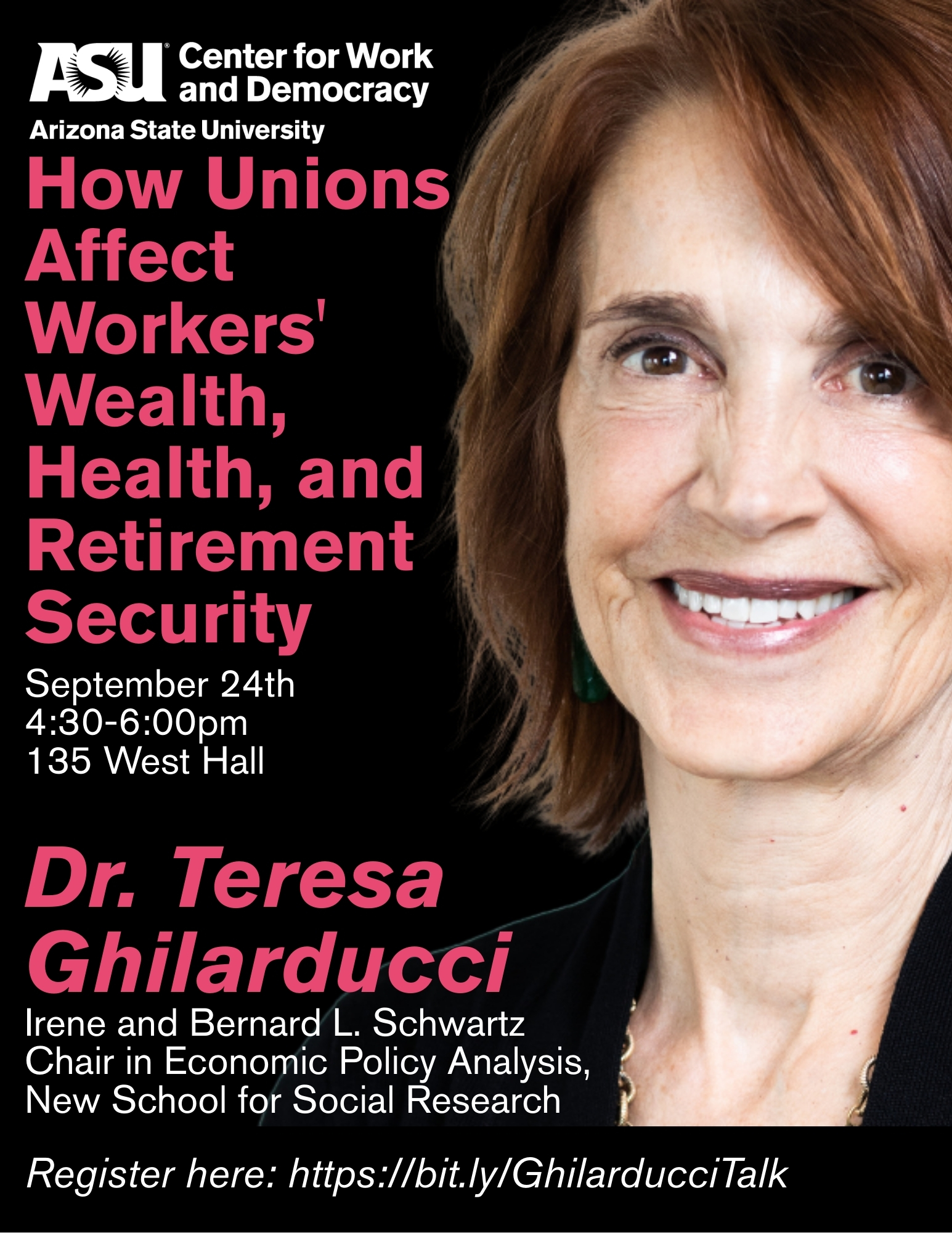
Join the Center for Work and Democracy in welcoming Visiting Professor Teresa Ghilarducci for her public talk, "How Unions Affect Workers' Wealth, Health, and Retirement Security by Gender, Race, and Class!" This talk will take place on September 24, 2025 from 4:30 to 6:00pm in West Hall, room 135. We hope to see you there!
Talk Details
Economic insecurity has emerged as a key lever in the appeal of populist and authoritarian movements. This makes economic security—what creates it and what destroys it—the central concern of this work. In particular, the role of organized labor in generating wealth is a core focus, since wealth functions as a form of insurance against the instability of market economies.
This talk (and paper) explores the multifaceted role of labor unions in enhancing workers' economic and retirement security, as well as their health—often beyond what would be expected given the jobs and industries in which unionized workers are concentrated. Drawing on longitudinal data, the research demonstrates that union membership significantly increases workers’ net wealth by directly improving access to employer-provided retirement plans and aiding in debt management. Unions also enhance wealth indirectly by improving job security and generating a wage premium. These effects are particularly strong for workers in the bottom half of the wealth distribution, but they also extend to the next 40 percent.
The health benefits of union membership arise from collective bargaining for safer working conditions, comprehensive health insurance, and employment stability. Critically, unions allow older workers to retire on their own terms, rather than being pushed out due to age discrimination, physical decline, or shifts in consumer demand and macroeconomic conditions. These findings underscore the protective function of unions as institutions that buffer workers from the rising risks of downward mobility in later life—showing that unionized workers are more likely to retire when they choose to, not when the labor market discards them.
